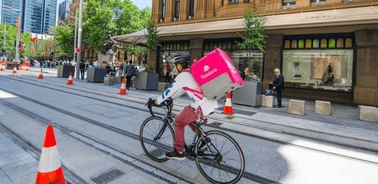The Impact of Logistics in Cities

By Manuel Pérez Romero.
Early in the morning, before dawn, a group of vans is waiting in a warehouse in the outskirts of Madrid. They are waiting to load their trunks with the packages for delivery that arrived at the warehouse the night before. Meanwhile, inside somebody is distributing the according to delivery areas for the drivers. Once the vans are filled with the goods to deliver, the race starts. The drivers proceed to the urban areas to deliver the parcels in the shortest possible time. They create an optimized circuit based on their own experience, or at best, with the help of a digital tool. In the meantime, the end clients are waiting at home tracking the orders on their smartphones. The van double-parks at the doorway of the building and the driver runs to ring the bell. Just for a second, the driver may meet the client. The driver hands over the parcel and asks for a signature. Then, he goes back to the double parked van, hoping not to have received a parking ticket. Every day, this picture is repeated many times in many cities throughout the world. It represents the normal process and flow of goods entering the city. It is urban logistics or the last mile of logistics.
There are a wide range of factors and stakeholders involved in the logistics flow and in turn, impacting the urban environment. The warehouse, the packages, the handling of the parcels, the van, the driver, the route, the tracking app, the street, the doorway, and the client, all form part of the logistics network.
The increasing complexity of the logistic flow requires the development of new ecosystem models to fully understand its behavior.
Today more than ever we are seeing the value of undertaking research to understand our increasingly complex and changing world. Therefore, applied research has a fundamental role in assisting us to be able to deal with the complexities that characterize cities and lay the groundwork for future research projects that will bring us one step closer to true and useful understanding. Academic institutions have a responsibility not only to educate students but to create and share knowledge, especially knowledge that will be needed for the future.
IE Center for Sustainable Cities was founded within IE School of Architecture and Design with the mission to contribute to seeing the city as an ecosystem. Our view sees all realms of the city- physical, natural, digital, social, economic, and political environments - as intimately linked to each other. Logistics is a crucial aspect of our cities in many ways. Yet, it is often taken for granted or we do not perceive its impacts – positive or negative. Therefore, in June we will be able to present The Impact of Logistics in Cities, an initiative together with Prologis, to analyze and evaluate the impact of logistics in cities, and to propose specific strategies, actions, and planning policies to achieve a positive impact in the urban environment while maintaining the efficiency and functionality of the logistics network.
“Urban logistics, hand in hand with concepts that are part of Prologis’ DNA, such as sustainability, automation and the promotion of talent, are already key factors in the modernization of large cities and will play a fundamental role in the development of the large economies in the medium and long-term,” adds Cristian Oller, VP, Country Manager at Prologis Spain.
